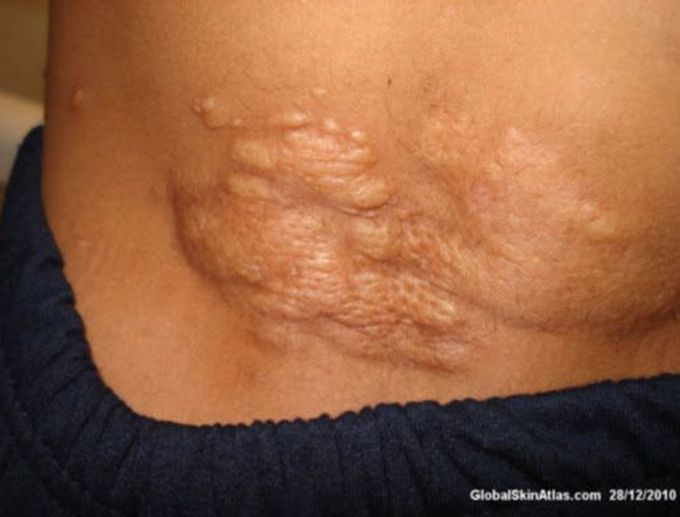


Shagreen Patch in Tuberous Sclerosis Complex
Tuberous sclerosis complex, also known as Bourneville-Pringle disease, is an autosomal dominant neurocutaneous disorder. It affects heart, brain, kidneys, and skin. There may be associated psychiatric findings. The typical triad of tuberous sclerosis is mental retardation, seizures, and cutaneous angiofibroma. Another common cutaneous finding observed in approximately 54% of cases is Shagreen Patch. Shagreen patch is connective tissue naevi. The shape is usually oval to nevoid. The overlying skin may be wrinkled or smooth. The color of lesion is usually that of skin; however, pigmentation may be seen in some individuals. Source Tuberous sclerosis complex (Bourneville-Pringle disease) in a 25-year- old female with bilateral renal angiomyolipoma and secondary hypertension https://www.sjkdt.org/article.asp?issn=1319-2442;year=2017;volume=28;issue=3;spage=633;epage=638;aulast=El#:~:text=Tuberous%20sclerosis%2C%20also%20known%20as,with%20dominant%20auto%2D%20somal%20inheritance.&text=It%20is%20a%20distinct%20clinical,described%20the%20first%20case%20in1880. Image via http://www.globalskinatlas.com/imagedetail.cfm?TopLevelid=1969&ImageID=4526&did=458
Thanks for sharing... but I wanna know that is there any colour variations in the patches of this skin disorder?
Hello! Shagreen patches are generally same as the color of skin. However, some people may have yellowish-red and pink nodules as well. Even pigmentation is seen in many patients.


